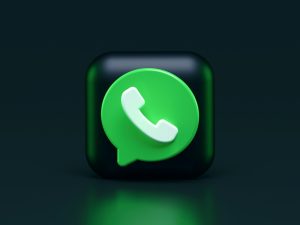In today’s digital age, effective communication is crucial for businesses striving to engage and retain customers. One powerful tool at your disposal is WhatsApp, a platform that enables direct and personal interactions. When combined with personalization techniques, the WhatsApp Business API can significantly enhance customer engagement and drive business success. This blog explores various personalization techniques and how to leverage the WhatsApp Business API for maximum impact.
Understanding the WhatsApp Business API
The WhatsApp Business API allows businesses to send automated, customized messages to customers at scale. It supports features like message templates, rich media, and interactive elements, making it a versatile tool for personalized communication. Here’s how you can harness its power:
Techniques for Personalizing WhatsApp Messages
- Segment Your Audience
- Why it matters: Not all customers are the same. Segmenting your audience based on demographics, purchase history, and behavior allows you to tailor your messages to specific groups.
- How to do it: Use customer data to create segments. For example, categorize customers into new, returning, and VIP groups. Tailor messages accordingly—new customers might receive welcome messages, while VIPs get exclusive offers.
- Use Customer Names
- Why it matters: Personalized greetings can make customers feel valued and recognized.
- How to do it: Incorporate dynamic fields in your message templates to automatically include the customer’s name. For instance, “Hello [Name], we have an exclusive offer just for you!”
- Leverage Purchase History
- Why it matters: Understanding what customers have bought previously allows you to recommend products or services that align with their interests.
- How to do it: Analyze purchase history and send personalized recommendations or restock reminders. For example, “Hi [Name], we noticed you bought [Product] last month. Would you be interested in [Complementary Product]?”
- Send Timely Messages
- Why it matters: Timing can greatly impact the effectiveness of your messages. Personalized timing can make your communication more relevant.
- How to do it: Use data to determine the best times to reach out. Send birthday wishes, anniversary congratulations, or reminders based on the customer’s interaction history.
- Incorporate Rich Media
- Why it matters: Images, videos, and other media can make your messages more engaging and personalized.
- How to do it: Send personalized videos or images that resonate with the customer’s preferences. For instance, a travel agency might send a personalized video showcasing a vacation package that matches the customer’s previous travel interests.
- Interactive Elements
- Why it matters: Engaging customers interactively can boost engagement and conversion rates.
- How to do it: Use buttons, quick replies, and interactive menus to allow customers to navigate through options that are relevant to them. For example, “Hi [Name], are you interested in our new collection? Reply with ‘Yes’ to see more or ‘No’ to get other recommendations.”
- Feedback and Surveys
- Why it matters: Gathering customer feedback helps improve services and shows that you value their opinion.
- How to do it: Send personalized surveys or feedback requests after a purchase or interaction. For instance, “Hi [Name], we hope you enjoyed your recent purchase. Could you take a moment to provide feedback?”
Implementing Personalization with WhatsApp Business API
To implement these techniques effectively, leverage the capabilities of the WhatsApp Business API. Here’s a step-by-step approach:
- Set Up the API
- Partner with a provider like MSG91 to integrate the WhatsApp Business API with your CRM or customer database.
- Create Message Templates
- Design message templates that incorporate dynamic fields for names, purchase history, and other personal data.
- Automate and Personalize
- Use automation tools to send messages at the right time and to the right segments. Ensure messages are personalized based on the customer’s profile.
- Monitor and Optimize
- Continuously monitor the performance of your messages. Use analytics to understand what works and optimize your strategy accordingly.
Conclusion
Personalizing your WhatsApp messages can significantly enhance customer engagement and satisfaction. By using techniques such as audience segmentation, leveraging purchase history, and incorporating rich media, you can create impactful and meaningful interactions with your customers. The WhatsApp Business API provides the tools needed to implement these strategies effectively, ensuring that your messages are not only received but also resonate with your audience. Embrace the power of personalization to unlock the full potential of your WhatsApp communication strategy.

